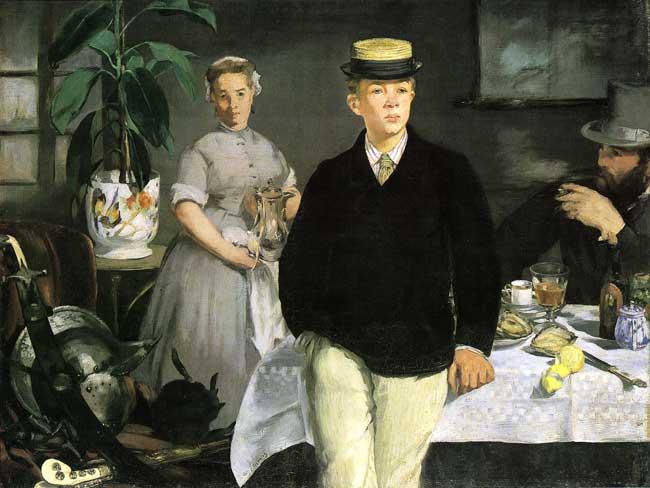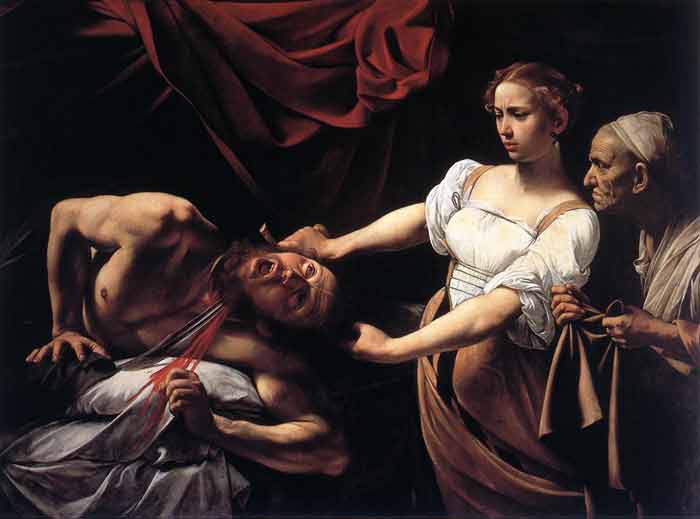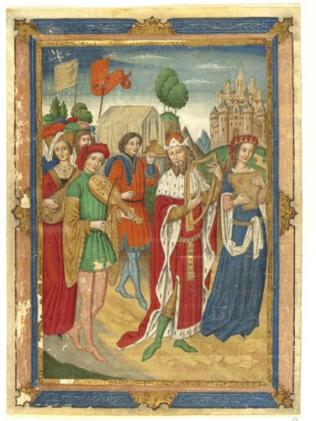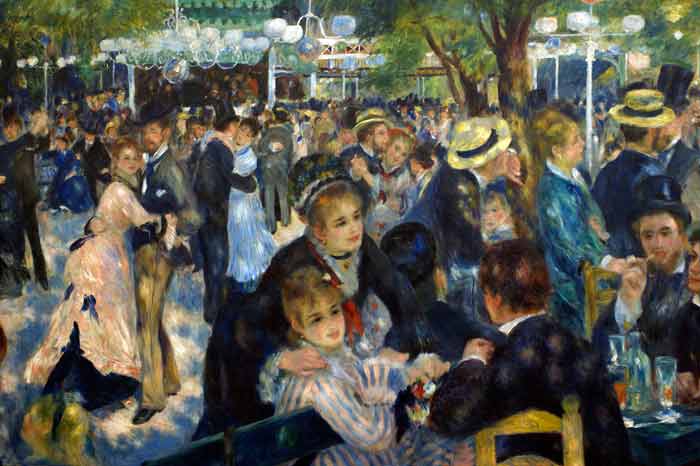On 6 Jun, 2011 With
Andrea Mantegna’s Oil Painting Technique – Foreshortening The Lamentation of Christ (also known as the Lamentation of Dead Christ, or the Dead Christ) is a c. 1480 oil painting by the Italian Renaissance artist Andrea Mantegna. While the dating of the piece is debated, is generally believed to have been completed between 1457 and 1501. It portrays the body Christ supine on a marble slab. He is watched over by the Virgin Mary and St. John, who are weeping for his death. The theme of the Lamentation is common in medieval and Renaissance art, although this treatment, dating back to a subject known as the Anointing of Christ is unusual for the period. Most Lamentations show much more contact between…
Read More
On 31 May, 2011 With
Manet’s Oil Painting Technique How to Paint in Oils Manet’s use of juxtaposed areas of dark tone, and his use of black-as a colour, and not as a tone (which are characteristics of much of his work, particularly of the 1860s) was wholly different from that of’ many of’ his contemporaries and demonstrates a very different technical procedure. Many mid -19th century painters favoured the use of bitumen, because of its beautiful, transparent brown colour. They loaded canvases with this unstable pigment and produced works which were superficially dramatic and flashy. The comments of Quentin Bell, although he is talking specifically of mid – l9th century British painters, are equally relevant to many French artists. He uses the term “slosh”…
Read More
On 26 May, 2011 With
Fine Art Video Lessons Finally Available Online A brand-new video course about classical oil painting and drawing techniques has been launched by the Web Art Academy. The Academy (http://art.webartacademy.com) offers fine art video lessons that reveal, step-by-step, the full process of artwork creation. Art students can now learn by watching the fine artist in action. London UK. A brand-new website offering high-quality fine art instruction has just been launched. The Web Art Academy (http://art.webartacademy.com) reveals traditional oil painting and drawing techniques to fine art students through the use of high-definition video lessons. The Web Art Academy was created to give fine art students a thorough instruction in the almost lost secrets of traditional oil painting and drawing. Natalie Richy and…
Read More
On 16 May, 2011 With
Classical Oil Painting and Drawing Techniques A new Internet-based resource about classical oil painting and drawing techniques has just been released by the Web Art Academy. The Academy (http://art.webartacademy.com) presents fine art video lessons for art students and enthusiasts wishing to improve their creative skills. London, UK. A new website specifically created for the fine art education market has just been launched after more than two years of course development and preparation. The Web Art Academy (http://art.webartacademy.com) is designed to help people easily acquire excellent oil painting and drawing skills and improve their chances of becoming successful and famous fine artists. Natalie Richy and Vladimir London, founders of the Web Art Academy, established the online club to provide students from all…
Read More
On 10 May, 2011 With
Caravaggio’s Oil Painting Technique Carravgio for the most part painted alla prima without any prepatory drawings or cartoons directly onto the canvas. The evidence for this is that over time the underpaintings have become more visable and show how he changed his mind and “searched” for him composition. He used a very limited pallet. David Hockney’s theory on masters using primitive projectors, pointed to Caravaggio’s marks on the wall (in “Judith Beheading Holofernes”) as proof to this for some reason. Its important to know that Hockney is the “conspiracy nut” of the art world who sees logic where there is none and speaks absurdly. Other than that, I have not come across anything as to why there are scratches in…
Read More
On 6 May, 2011 With
What they learned from the OLD MASTERS? Michelangelo
Read More
On 30 Dec, 2010 With
The Spanish Forger is the name given to an unidentified individual who, in the late 19th to early 20th century, created a large number of forgeries of medieval miniatures. The Spanish Forger’s works were painted on vellum or parchment leaves of genuine medieval books, using either blank margins or scraping off the original writing. He also “completed” unfinished miniatures or added missing miniatures in medieval choir books. His works fooled many experts and collectors and appear today in the collections of many museums and libraries. Over 200 forgeries have been identified. Although he was originally thought to be Spanish, it is now believed he may have been French, working in Paris. A number of his forged miniatures have been identified as copied, with modifications,…
Read More
On 20 Dec, 2010 With
John Myatt, (born 1945), is a British artist and convicted forger who, with John Drewe, perpetrated what has been described as “the biggest art fraud of the 20th century”. Early life The son of a farmer, Myatt attended art school, and discovered a talent for mimicking other artists’ styles, but at first only painted for amusement and for friends. He worked as a songwriter for a time, and wrote the single “Silly Games”, a UK Top 40 hit for Janet Kay in 1979. He later worked as a teacher in Staffordshire. Painting When his wife left him in 1985, Myatt gave up teaching to spend more time with his children, and attempted to make a living by painting original works in the style of well known artists….
Read More
On 5 Dec, 2010 With
This work was afterwards destroyed by fire, but the composition has been preserved by the burin of Fontana. His next performance was his celebrated picture of St. Pietro Martire, in the church of SS. Giovanni e Paolo, at Venice, which is generally regarded as his master-piece in historical paint[Pg 3]ing. This picture was carried to Paris by the French, and subsequently restored by the Allies. Notwithstanding the importance of these and other commissions, and the great reputation he had acquired, it is said, though with little probability of truth, that he received such a small remuneration for his works, that he was in actual indigence in 1530, when the praises bestowed upon him in the writings of his friend Pietro…
Read More
On 30 Nov, 2010 With
• Bal Au Moulin de la Galette (1876) by Pierre-Auguste Renoir. Sold for $78.1 million in 1990 at Sotheby’s, New York.
Read More






